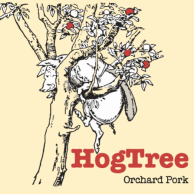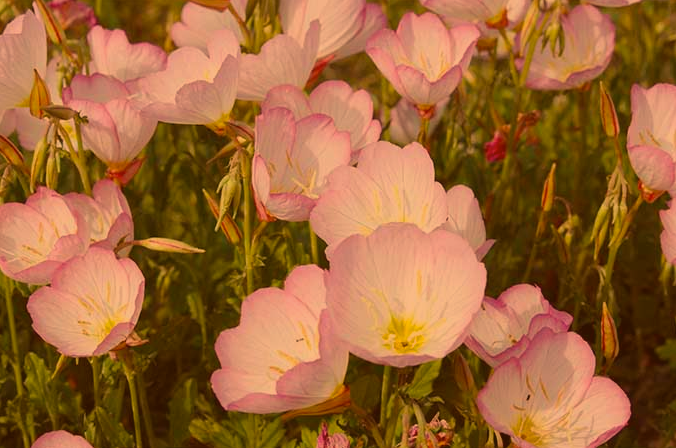I had a brief period of downtime last week and what did I do? I got in bed with my computer, a glass [bottle] of Eve’s pommeau , and a hankering to read about pigs in cultivated places (could be an orchard, could be a wood pasture). After some rabbit hole google searches, I stumbled on a bit of research that made me excited: A paper on pigs in Chernobyl.

Back in 1986, Ukraine had a nuclear disaster affecting 1000 square miles around the Chernobyl nuclear power plant. All of the residents within this 1000 square mile exclusion zone were forced to evacuate, leaving their livelihoods behind. Many of the inhabitants were subsistence farmers, who were forced to abandon their gardens, orchards, hogs and chickens. Since, a radioactive landscape thrives in the absence of humans.
In 1992 and 1993, scientists ventured into the exclusion zone to capture pigs at different times of the year in order to record their age, weight and stomach contents. They wanted to know what in the heck these domestic-turned-wild pigs were eating once all of the people left. Turns out, I wanted to know as well! The results were put into a beautiful chart that I wish I could make using excel:

Apologies for the blue light blocker
As someone who is VERY into perennial livestock food schemes, I LOVE this chart. This shows what free choice looks like within a human manipulated environment. Give a pig an orchard, herbs, abandoned grain silos, evening primrose and small rodents, and watch their preference by season. What’s very interesting to me is the absence of grain in their Fall, Winter and Snow-bound winter diets. Yet come spring, the pigs are back on the grain train, though never more than a quarter of their diet. I also enjoyed seeing an absence of fruit in the early winter diet, but a presence in snow winter. This has got to be due to apples and pears that don’t fall.
Support my writings and more through the purchase of charcuterie at www.hogtree.com

I think there is a lot to learn from this type of study and would LOVE to know if this sort of study exists for anywhere in America. This study shows that pigs eat a LOT of evening primrose, dandelion/dandelion cousins, hawkweed and stinging nettle. All of these plants re-seed happily and profoundly by themselves, offer amazing nectaries for insects, and can provide medicine and food for us, too. Not to mention, these plants also comprise a garden club planting scheme from hell. (Mwahahahahahaha)

Evening Primrose
Evil cackling aside, lets examine Evening Primrose (Oenothera spp) a little more deeply for a moment. It is native to the US and was brought to Europe in the 1600s, where it quickly established itself all over the place (Ukraine included) and has now naturalized. For human consumption, it was once cultivated for the roots, which taste like salsify. In today’s time, it is now grown for the seeds which contain large amounts of Omega-6 oils. Natives used the whole plant to treat minor wounds and bruises, and the roots to treat hemorrhoids. The pigs probably know about all of these health and wellness benefits, which is why they love it so much.
From a horticultural perspective, there are many cultivars of Evening Primrose. Some are annuals, some perennials and some biennials. Some are drought proof and love infertile soils, others prefer moist fertile soils. Some grow to be 6 feet tall, while others become low-growing ground covers. The diversity is huge within this plant’s genetics and it seems like there is a cultivar or two (or three) for everyone. The other interesting thing about Evening primrose is how it is propagated. They are amazing and prolific self seeders, but they are also propagated by division. Division is when the roots are divided into smaller pieces and then replanted wherever you want.
With the ability to be propagated by division or by seed, it seems as if Evening Primrose is well adapted to the pigness of the pig. Pigs and their rooting behaviors would easily divide this plant and provide a seed bed to be sewn for the plants loaded with seed. What roots they don’t eat would return again the following year in plant form. Perhaps this is, in part, why this plant occupied such a large space in their yearly diets?
Though I could see it becoming slightly out of control, there is more to learn about this plant and others in their applications as pig fodder. Identifying fodder for pastured pigs in cold (or not so cold) climates that will thrive against repeated destruction is hard to find. I’m excited for some of you out there in the world to give it a try.
*Rumor has it, evening primrose is also a japanese beetle trap crop. I wonder if pigs will eat Japanese beetles? Has anyone ever observed this?*
Chernobyl Apples
There was an old Ukrainian
woman at the market
selling her goods.
Come get your apples!
she calls.
Chernobyl apples!
Don’t say that,
someone tells her.
No one will ever buy
radiated apples.
Don’t worry, she says.
They all buy them.
Some need them
for their mother-in-law.
Some for their boss.
There was an old Ukrainian
woman at the market
selling her goods.
Come get your mushrooms!
she calls.
Chernobyl mushrooms!
-John Bradley